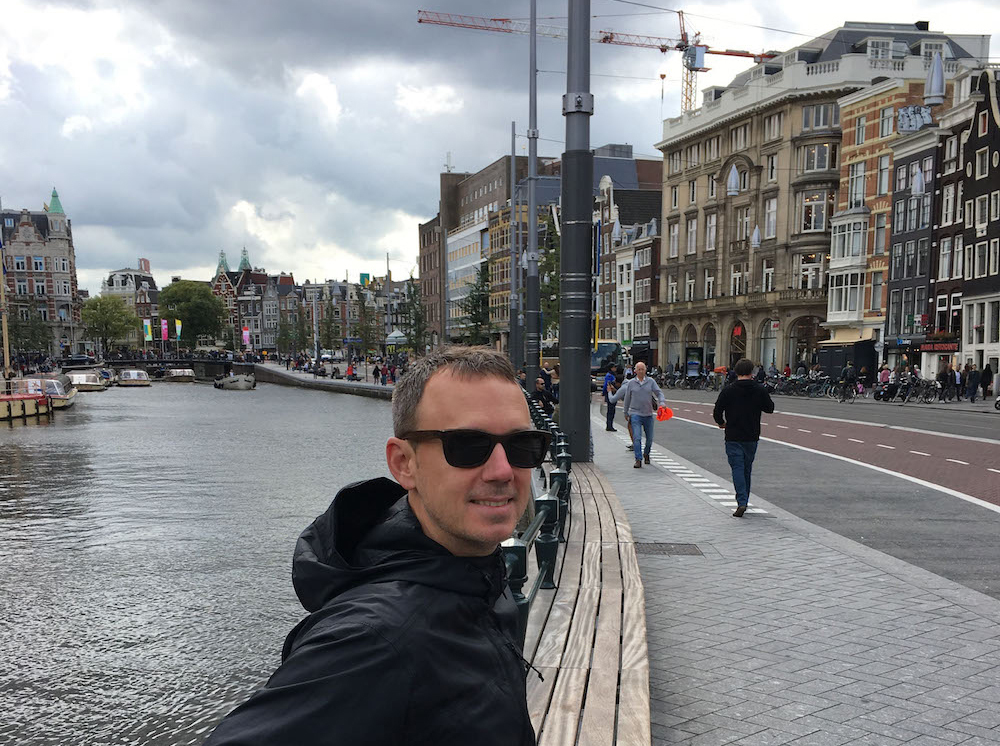
A true jack-of-all-trades, Mark Longman’s input has been invaluable throughout his career at Tideworks. Today he’s a senior software engineer and team lead in developing the next iteration of our Mainsail Terminal Operating System (TOS). In 2001, he joined Tideworks as a front-end web developer. Since then he’s worked on almost every web-based product carried by both Tideworks and Carrix. User interface and usability design have always been paramount to his approach in software development and he has thoroughly enjoyed playing a role in creating clean and simple software solutions.
He easily navigates between product development and promotion, front-end to database work, and even creates website banner ads, there’s little Mark can’t (or won’t) do. But with his signature modesty, he says he doesn’t consider himself a true expert in one particular area, but he “knows enough to be dangerous.” Given his results, we say bring on the danger!
Previous incarnations of Mainsail ran using Oracle Forms and Adobe Flex, but with the decision to move Mainsail 10 to React.js, Mark was the logical choice to lead the team. Never to be known as one to “settle” on design, he’s enjoyed seeing our products evolve with the help of our customers. It was a massive endeavor, rebuilding Mainsail from the ground up, but Tideworks had the right man in charge, and the tools necessary to get the job done.
What it Was Like Working on Mainsail 10
The early months of the project were spent sourcing enthusiastic software professionals, with the goal to create a cohesive group that could work together toward a common vision. This was a critical step in the process because of the various challenges the team would inevitably face; bringing a legacy system up to modern standards with the goal of extensibility and customization. Mark says, “with an aggressive timeline, you have very little room for error. We needed the right team members and a clear vision to keep the team focused and allow us to reach our goals.”
It also played into another of Mark’s early decisions — to pool a diverse team of professionals. As he puts it, “if we have someone who is really strong at middle-tier Java Development but doesn’t have a keen interest in user interface design or pixel colors on a screen, that’s OK. We’ve got someone else on the team that excels in that area… We have a group that works extremely well together today that’s giving us an exceptional product.”
Explore how Tideworks implemented a variety of TOS modules within New Orleans Terminal already existing technology solutions to ensure the efficiency of operations, as well as to reduce any interruption of service.
What Were Some of the Early Goals for Mainsail 10?
Early on the team identified a few main objectives to transition from Mainsail Vanguard and Mainsail Classic to this new version of the TOS. Above all else, they wanted to make certain that Mainsail 10 did not require customers to change their existing processes, but improve them and provide better ways to manage the data for their terminal. They wanted existing users to be comfortable with the new software while simultaneously adding features that new customers were already asking for.
Personally, Mark felt this meant building a tool that you didn’t need to think about — one that just worked. “We all have tools at our disposal that we use every day,” he says. “I use Outlook, Excel, and other tools every day, but I don’t get emotional about them because they consistently work. I expect that same experience for those who are using Mainsail 10. I don’t want people to slow down their processes due to how we implemented our software. I want them to be able to focus on what’s most important — running their terminal.”

Mark and his team also wanted to move Mainsail away from being a “monolithic” application to one that’s highly configurable and can accommodate any range of customer needs. They were looking to build the next industry standard TOS. This meant creating a product that will be just as useful today and powerful for many years to come.
The Team Is Proud of Their Work Overall, But a Few Features Really Stand Out
Mark gives his team huge kudos for creating the next generation leader in TOS software, but there are a few features that are close to his heart.
One is the drag and drop functionality, a feature that’s never been supported in previous versions of the software due to software limitations. With our current platform, we are able to achieve this type of user interface interaction and now, we have endless possibilities.
He’s also proud of the dynamic pivot table functionality that’s currently still in beta. It allows users to create their own customizable recap of data with just a few movements of a mouse. In its fully-realized form, Mainsail 10’s dynamic recaps will give terminal operators a vast amount of control of their data visualizations. Additionally, the customization and theming options that are built into Mainsail are another feature Mark’s excited about. It allows customers to personalize their user experience to fit their terminal’s unique needs.
Mark’s Work on Mainsail 10 Is Something He’ll Never Forget
For Mark, the process is just as rewarding as the final reveal. He loves working with people and seeing every team member make a unique and valuable contribution.
As Mark puts it, “Knowing that the people behind this product come from all backgrounds, education, life experiences, languages, whatever it is provides fresh perspectives. Seeing our diverse group contribute toward a common goal; not giving up through all the challenges, that’s when I feel most proud of this team. Also, seeing people working in harmony with our customers to address their needs and crossing bridges to present solutions that work — that’s what makes it all worthwhile.”


